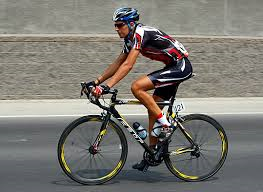
CYCLING: Reducing the risk of common injuries

INTRODUCTION
Cycling is a great form of exercise with many health and environmental benefits. Cyclists do however suffer from their fair share of injuries, many of which can often be either avoided or successfully managed by looking at the mechanics of both the bike and its rider.
RIDER
A number of physical factors can affect both a cyclist’s level of comfort and risk of injury. These include:
1.) Poor flexibility
2.) Muscle weakness / imbalance
3.) Previous injuries
4.) Congenital issues
5.) Poor Posture
6.) Leg length discrepancy
Between rides, it is also important to consider the impact that day-to-day activities may have such as work, home and other sports will have on the cyclist’s body.
BIKE
The setup of the bike is also crucial and needs to be carried out with the individual in mind. Some of the important points are explained below:
1. Correct Sizing
Stand astride your bike and there should be at least a two-inch gap between the top tube and your groin. The correct crank size is also very important and is dependant upon pedalling style and gear size.
1. Saddle height
This is extremely important to ensure both optimal efficiency and injury-prevention whilst riding. Cycling with a saddle that is too high leaves the rider prone to lower back and pelvic injuries. Also, in this position, the hamstrings are at a mechanical disadvantage and therefore prone to injury.
A saddle that is too low is a common cause of knee pain due to increased pressure through the kneecap. This position also leads to excessive hip and lumbar spine flexion at the top of the upstroke.
A good starting point for correct height is to sit on the saddle and place your heel on the pedal at the six o’clock position. The extended leg should be straight and your pelvis level. Now move the ball of your foot to the pedalling position and you will have a slight bend in your knee. However, there are many other factors to consider regarding seat height including both your particular style and chosen discipline of cycling.
1. Handlebar height
Handlebars are currently often set very low to improve aerodynamics but this can lead to increased stress through the shoulders, elbows and wrists. Also, a common complaint amongst cyclists is neck pain. This is often caused by excessively extending the neck to look ahead.
1. Pedals
The most important point is that you should be able to pedal comfortably without stress or injury. A common check is to ensure that at halfway of the down stroke the kneecap should be in line with centre of the front of the pedal. It is also important to regularly check pedal cleats for wear and loosening as excessive movement can lead to lower limb injuries.
IN SUMMARY
There are many other factors that both cause and help to resolve cycling injuries. A specialist sports physiotherapist with a good working knowledge of cycling biomechanics can look beyond the initial bike setup and assess the cyclist on an individual level. Addressing issues involving biomechanics and posture can help tackle any cycling-related aches and pains or help prevent injuries occurring in the first place… helping you stay strong on the road and enjoying your ride.



